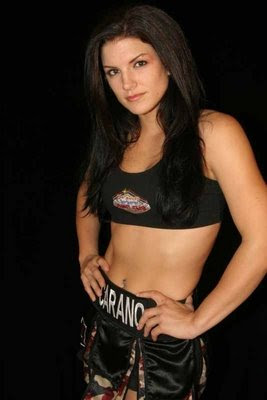
Born February 11, 1964 (1964-02-11) (age 44)
Sandpoint, Idaho, U.S.
Political party Republican
Spouse Todd Palin (since 1988)
Children Track, Bristol, Willow, Piper, Trig
Residence Wasilla, Alaska
Occupation Businessperson, Politician
Religion Non-denominational Christian
Sarah Louise Heath Palin (pronounced /ˈpeɪlɨn/; born February 11, 1964) is the governor of the U.S. state of Alaska and the Republican Party's vice-presidential nominee for the 2008 United States presidential election.
Palin was a member of the Wasilla, Alaska city council from 1992 to 1996 and mayor from 1996 to 2002. After an unsuccessful campaign for lieutenant governor of Alaska in 2002, she chaired the Alaska Oil and Gas Conservation Commission from 2003 to 2004. She was elected governor of Alaska in November 2006 by defeating the incumbent governor in the Republican primary and then defeating a former two-term Democratic governor in the general election. She is the first female governor of Alaska, and the youngest person elected to the position.
On August 29, 2008, presidential candidate John McCain announced he had chosen Palin as his running mate in the 2008 U.S. presidential election. Palin was formally nominated at the 2008 Republican National Convention in Saint Paul, Minnesota. She is the first woman to run on the Republican Party's presidential ticket and the first Alaskan nominee of either major party.
Early life and education
Palin was born in Sandpoint, Idaho, the third of four children of Sarah Heath (née Sheeran), a school secretary, and Charles R. Heath, a science teacher and track coach. She is of English, German, and Irish descent. The family moved to Alaska when she was an infant. As a child, she would sometimes go moose hunting with her father before school. The family regularly ran 5 km and 10 km races.
Palin attended Wasilla High School in Wasilla, located 44 miles (71 km) north of Anchorage. She was the head of the Fellowship of Christian Athletes chapter at the school and the point guard and captain of the school's girls' basketball team.

Palin attended several colleges and universities out of state, which was routine for Alaskans uncertain about their interests and attracted to warmer climates. In 1982, she enrolled at Hawaii Pacific College but left after her first semester. She transferred to North Idaho community college, where she spent two semesters as a general studies major. From there, she transferred to the University of Idaho for two semesters. During this time Palin won the Miss Wasilla Pageant, then finished third in the 1984 Miss Alaska pageant, at which she won a college scholarship and the "Miss Congeniality" award. Diane Osborne, Palin's hairdresser during the pageants, recalls her as "so soft-spoken, so unobtrusive, so agreeable as to seem void of the urgent quest for attention that Osborne had recognized in others." After the pageants Palin attended the Matanuska-Susitna community college in Alaska for one term. The next year she returned to the University of Idaho where she spent three semesters completing her Bachelor of Science degree in communications-journalism, graduating in 1987.


In 1988, she worked as a sports reporter for KTUU-TV and KTVA-TV in Anchorage, Alaska, and for the Mat-Su Valley Frontiersman as a sports reporter. She also helped in her husband’s commercial fishing family business.
Personal life
"Levi Johnston" redirects here. For the football player, see Levi Johnson.
In 1988, Palin eloped with her childhood sweetheart Todd Palin because, according to her mother, Palin believed that her parents "couldn't afford a big white wedding." Todd Palin works for the London-based oil company BP as an oil-field production operator and owns a commercial fishing business. The Palins have an estimated combined net worth of over $1 million.


Palin family members at announcement of vice-presidential selection, 29 Aug 2008. From left to right: Todd, Piper, Willow, Bristol and Trig.Palin describes herself as a hockey mom. The Palins have five children: sons Track (b. 1989)[182] and Trig (b. 2008), and daughters Bristol (b. 1990), Willow (b. 1995), and Piper (b. 2001).[183] Track enlisted in the U.S. Army on September 11, 2007, and was subsequently assigned to an infantry brigade. He and his unit deployed to Iraq in September 2008, for 12 months. On September 1, 2008, Palin announced that Bristol was five months pregnant and that she intends to keep the baby and marry Levi Johnston, the father of the child. Palin's youngest child, Trig, was prenatally diagnosed with Down syndrome.


Palin was born into a Catholic family. Later her family joined the Wasilla Assembly of God, a Pentecostal church. Palin attended the Wasilla Assembly of God until 2002. Palin says she switched to Wasilla Bible Church because she preferred the children's ministries there. When in Juneau, she attends the Juneau Christian Center. Her current home church is the Wasilla Bible Church, an independent congregation. Palin described herself in an interview as a "Bible-believing Christian." After the Republican National Convention, a spokesperson for the McCain campaign told CNN that Palin "doesn't consider herself Pentecostal" and has "deep religious convictions."





























